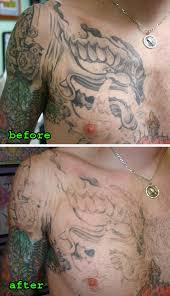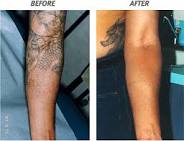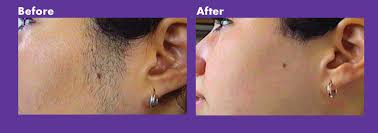Laser Tattoo Removal Surgery
Laser tattoo removal is a growing trend among people who had "ink" done in their youth, but now view it as outdated or as detrimental to their career. Others may be dissatisfied with a tattoo that was poorly done.
There is also a trend among former gang members to have gang-related tattoos removed, and some areas have free removal services for such cases.
Whatever your reason may be for removing a tattoo, laser procedures are the most common and effective method for erasing the ink. Previous methods of tattoo removal included dermabrasion ("sanding" the area) and excision (cutting inked skin out of the area and possibly grafting skin into the area). While these methods may still be used occasionally, the use of laser pulses has become the standard method.
You may have seen creams marketed to remove tattoos; some are being investigated for effectiveness, but there isn't much evidence for them yet.
Passing through the surface layers of your skin, the light is absorbed by the tattooed pigments, causing them to break into smaller particles. Your body's immune system then removes the fragmented tattooed particles. And because your immune system works best in areas of greater blood circulation, ink can be removed faster in those areas. Thus, it's more difficult to remove tattoos in the hands and feet, where there is less circulation.
Tattoo removal may require anywhere from one to ten laser treatment sessions, each treatment lasting only a few minutes, with four- to eight-week intervals between each session. Each treatment penetrates a little deeper, removing more ink and leaving the tattoo progressively lighter.
Also, darker ink happens to be more easily fragmented, as is less dense ink that is closer to the surface. However, laser treatments may also be effective on people with darker skin and with varied ink colors.

With advances in laser technology and better methods, scarring has become rare.









There is also a trend among former gang members to have gang-related tattoos removed, and some areas have free removal services for such cases.
Whatever your reason may be for removing a tattoo, laser procedures are the most common and effective method for erasing the ink. Previous methods of tattoo removal included dermabrasion ("sanding" the area) and excision (cutting inked skin out of the area and possibly grafting skin into the area). While these methods may still be used occasionally, the use of laser pulses has become the standard method.
You may have seen creams marketed to remove tattoos; some are being investigated for effectiveness, but there isn't much evidence for them yet.
Before Treatment
Before laser tattoo removal, your skin will be evaluated as to condition and color in relation to ink color to determine the best type of laser light delivery. Also you'll be given protective eyewear to shield your eyes from the laser light. Your doctor may recommend oral pain medication such as Tylenol and a topical anesthetic cream an hour or two before treatment. Some patients receive an injected local anesthetic.The Laser Tattoo Removal Procedure
The laser device fragments the ink with short pulses of intense, concentrated laser light. The method of delivery and the wavelengths used are designed to target only the tattooed pigments, without affecting the surrounding pigments and layers of skin. Different laser lights are used for different ink colors. Black ink is easiest to remove, because black absorbs the full spectrum of light, while green, blue, red, and other colors require more targeted laser pulses.Passing through the surface layers of your skin, the light is absorbed by the tattooed pigments, causing them to break into smaller particles. Your body's immune system then removes the fragmented tattooed particles. And because your immune system works best in areas of greater blood circulation, ink can be removed faster in those areas. Thus, it's more difficult to remove tattoos in the hands and feet, where there is less circulation.
Tattoo removal may require anywhere from one to ten laser treatment sessions, each treatment lasting only a few minutes, with four- to eight-week intervals between each session. Each treatment penetrates a little deeper, removing more ink and leaving the tattoo progressively lighter.
After Treatment
After the procedure, you'll be given anti-bacterial ointment and bandaging on the treated area. Your doctor may instruct you to keep the treated area elevated to avoid swelling, and to avoid the sun, as your skin will be extra sensitive to sun damage. You may feel a slight sunburn sensation for a couple of days and have redness for a few weeks.Best Candidates for Laser Tattoo Removal
The best candidates are people with a fair to medium-light complexion who have darker ink tattoos applied sparsely and close to the skin surface. The laser light seeks contrast to target the appropriate pigments, so the greater the contrast (dark ink on light skin), the more effective the removal process and the fewer sessions needed.Also, darker ink happens to be more easily fragmented, as is less dense ink that is closer to the surface. However, laser treatments may also be effective on people with darker skin and with varied ink colors.

Tattoo Removal Side Effects
Side effects of laser tattoo removal are rare, but may include blistering, infection, loss of skin color, or scabbing. If scabbing occurs, it usually subsides within two weeks. In most cases, skin returns back to normal.With advances in laser technology and better methods, scarring has become rare.






0 comments:
Post a Comment